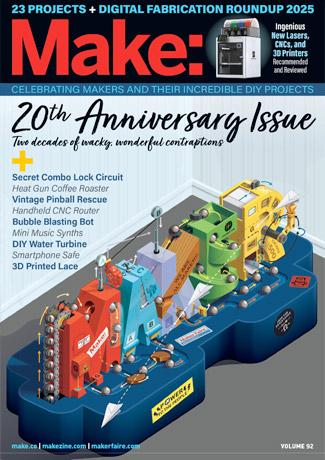
ROME — Today at the Rome Maker Faire, Intel and Arduino are announcing a new board, the Arduino 101, powered by the Intel Curie module. It is scheduled to be available in the first quarter of 2016, at about $30.
(Outside of the U.S., Arduino is known as Genuino.)
Thanks to technology in the Curie, the Arduino 101 will have a 6-axis accelerometer with a gyroscope, and the hardware for Bluetooth wireless communication, in addition to the familiar input and output capabilities of the classic Arduino UNO.
Together, Intel and Arduino plan to use the cobranded board to promote their initiative, Arduino 101 in the Classroom, a computer science and design curriculum aimed at educating 11–14 year old students in emerging technologies. The Arduino 101 will also be the hardware configuration of the Currie that contestants will use during Intel and Turner Broadcasting System’s upcoming reality television show America’s Greatest Makers.
Arduino 101
The Arduino 101 will look familiar to current Arduino users, as it retains the familiar 70mm×55mm×20mm form factor of the Arduino UNO. However, close inspection of the circuit board reveals an on-board antenna (note the bottom right corner on the image above) and a new main processor, a low-power, 32-bit Intel Quark microcontroller known as the Curie module. What differentiates this particular Quark, however, is the on-die 6-axis accelerometer/gyro and the Bluetooth communication hardware.
Programming the Arduino 101 is exactly the same process as programming an Arduino UNO. Using the Arduino IDE, you write your code, compile it, and upload it to your board. Intel is also providing special libraries to let programmers utilize the Curie module’s unique features, such as the accelerometer with gyroscope and Bluetooth. It is unclear the level of software support for these features at product launch, but expect Intel to continually improve the software experience.
Intel Curie Module

When we first saw the Curie at CES this year, Intel had packaged it on tiny, button-sized module that we assumed would be marketed as a board for wearable projects. As far as we know now, that module is not scheduled for release. The Curie-powered Arduino is a new direction for this technology.
It’s a new go-to-market strategy for Intel; a previous system-on-chip, the Edison, was packaged by Intel itself, and Intel also made accessory boards for it (Sparkfun made accessory boards for the Edison as well).
Intel and Arduino
This is not the first collaboration between Intel and Arduino. Nearly two years ago, also during Maker Faire Rome, Intel and Arduino announced the Intel Galileo, a microcontroller board with Arduino-compatible headers. Like the Edison, the Galileo was Arduino-certified. The Curie-powered Arduino 101, though, is a co-branded venture with Arduino. It doesn’t need certification. It is an Arduino, and could be more attractive to the Arduino community because of that.
Arduino Gets Its Way
Prior to the release of the Arduino 101, the specifications for the Curie indicated its power requirements were only 1.8V, a common voltage for a coin cell battery. Technically, the power requirements remain the same for the Curie module. However, the power requirements dictated by the Arduino ecosystem require at least 3.3V to properly power the I/O. Dictated by the collaborative nature of the project, the Arduino 101 design does not allow the Curie to be powered by a coin cell battery.
Another change: The Curie module is known to have a 128-node neural network, which can be used for machine-learning applications. But software support for that technology is not shipping at this time. Intel says it will be supported later.
Beyond these two differences, the Curie module has nearly identical specs to the product announced at CES.

Arduino 101 in the Classroom
The final aspect of the partnership is Intel’s marketing of Arduino co-founder David Cuartielles’ Creative Technologies in the Classroom (CTC). The courseware will be updated to reflect the new capabilities of the Arduino 101, like Bluetooth. Previously, the curriculum used the Arduino UNO to playfully teach students age 11–14 (though it’s really appropriate for anyone) basic skills in programming, electronics, and mechanical design. While little-known in the United States, CTC is used in 125 schools worldwide, reaching approximately 3,500 students. Intel’s push could help this curriculum land in thousands of schools world-wide.
ADVERTISEMENT









